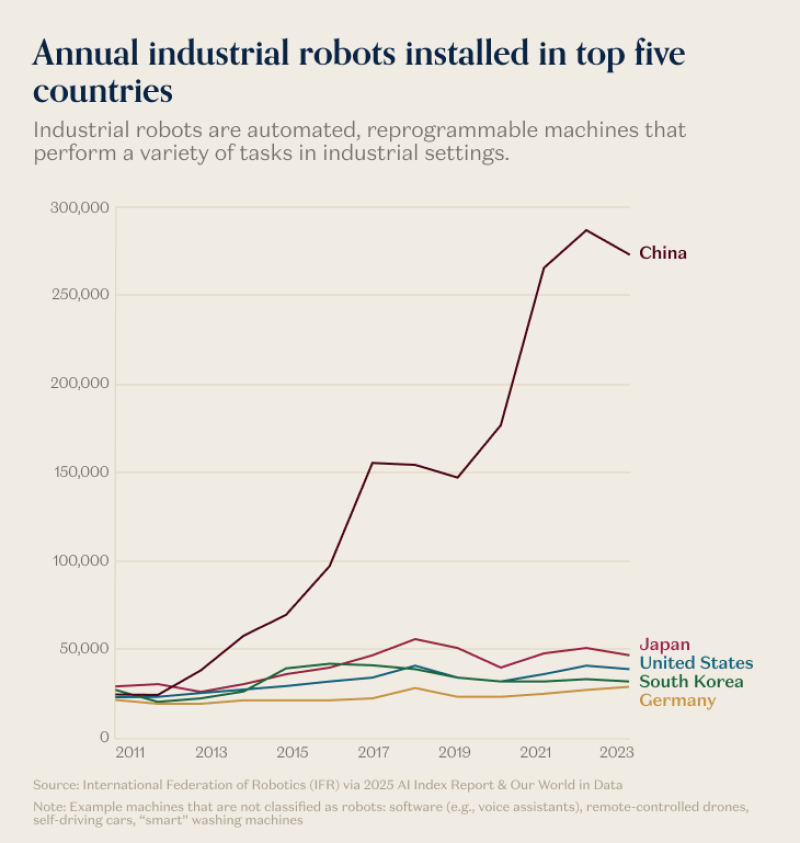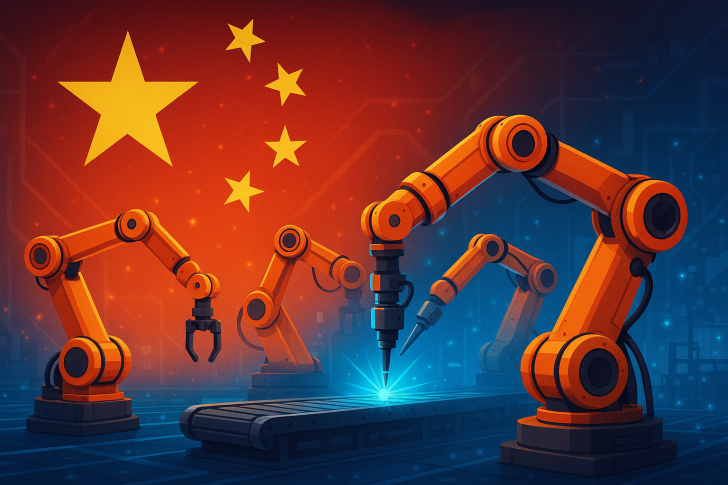● China's lead in industrial robotics has become undeniable. According to Jason Smith - 上官杰文, "China has manufacturing robots that make manufacturing robots. China won the robot race." The numbers back him up completely.

● Data from the International Federation of Robotics shows China installing over 300,000 industrial robots annually — far outpacing Japan, the United States, South Korea, and Germany. This massive push is central to China's industrial strategy: achieving automation independence by integrating robotics across its entire manufacturing sector.
● While Japan and Germany once led the robotics world, China's growth since 2015 has been explosive. The country has transformed from a low-cost manufacturing base into the global powerhouse of robot production itself.
● This shift creates both opportunities and challenges. For China, automation means higher productivity, export dominance, and better wages through advanced manufacturing. For everyone else, it raises concerns about industrial dependence — as more production lines and robotic components come from Chinese companies, other nations struggle to keep up technologically and maintain their skilled workforces.
● Financially, this reshapes the entire robotics economy, expected to top $25 billion yearly by 2030. Western countries may need stronger R&D incentives and updated tax policies to boost their own robotics industries and avoid falling further behind.
● The IFR data tells the story clearly: China's installations have grown nearly tenfold since 2013, while other top countries have stayed relatively flat. Each new robot increases productivity and strengthens China's economy through corporate profits and efficiency gains, making automation a key driver of national economic policy.
 Eseandre Mordi
Eseandre Mordi

 Eseandre Mordi
Eseandre Mordi


